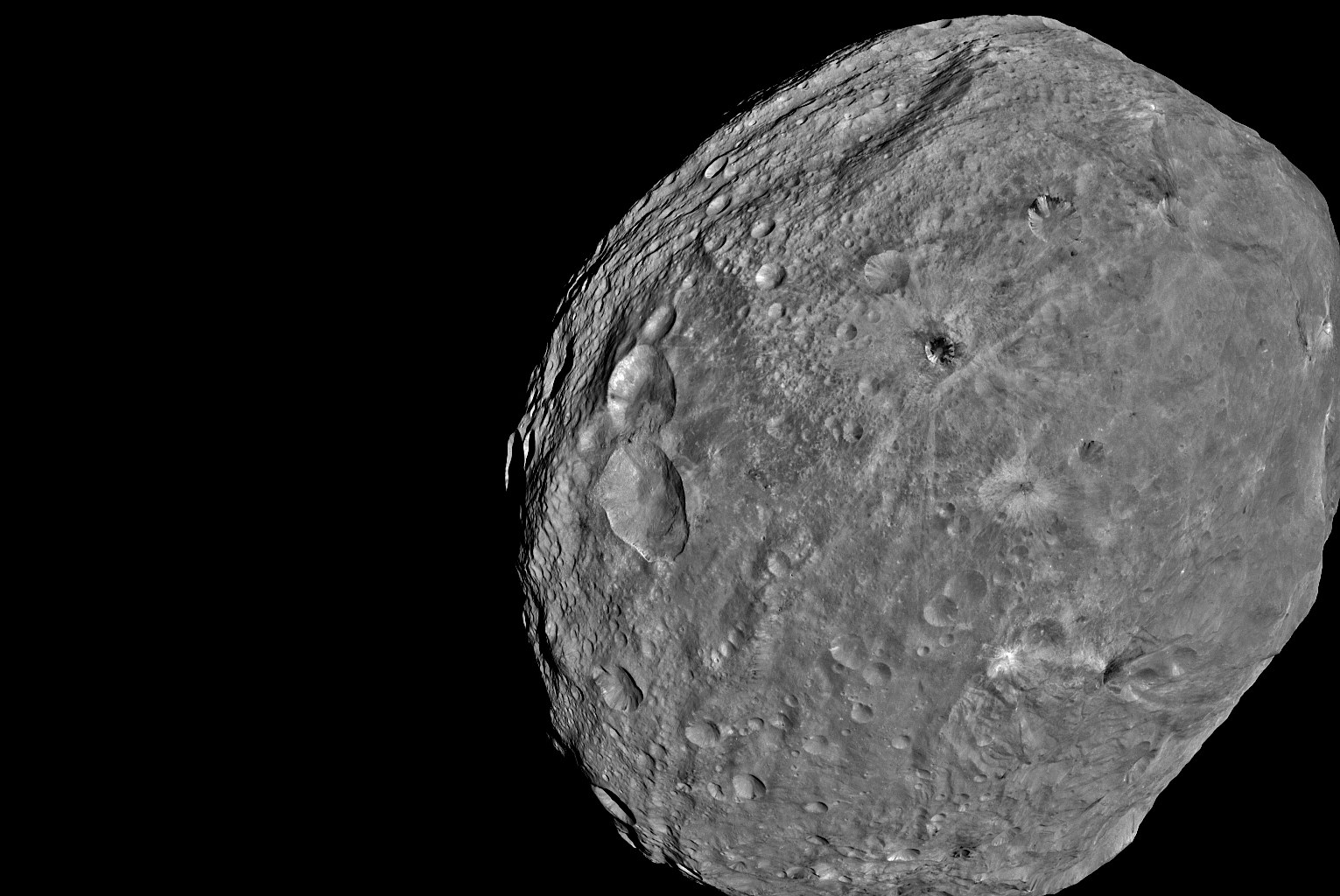Asteroid Vesta
Asteroid Vesta
Discovered in 1807 and 525 kilometres across, the celestial body Vesta is the second largest object in the asteroid belt after the dwarf planet Ceres and is thus the largest asteroid in the Solar System. It comprises approximately eight percent of the total mass of the Main Asteroid Belt. Vesta's interior is 'differentiated' – after the asteroid's formation, the components that were initially homogeneously mixed then segregated and separated. The heat released by the decay of radioactive elements led to the formation of melts. The components dominated by heavy elements such as iron sank to the centre of the body, while the melts rich in lighter components such as silicate rocks rose to the surface. This created an iron core, a silicate mantle and an iron- and magnesium-rich crust of basaltic rocks.

